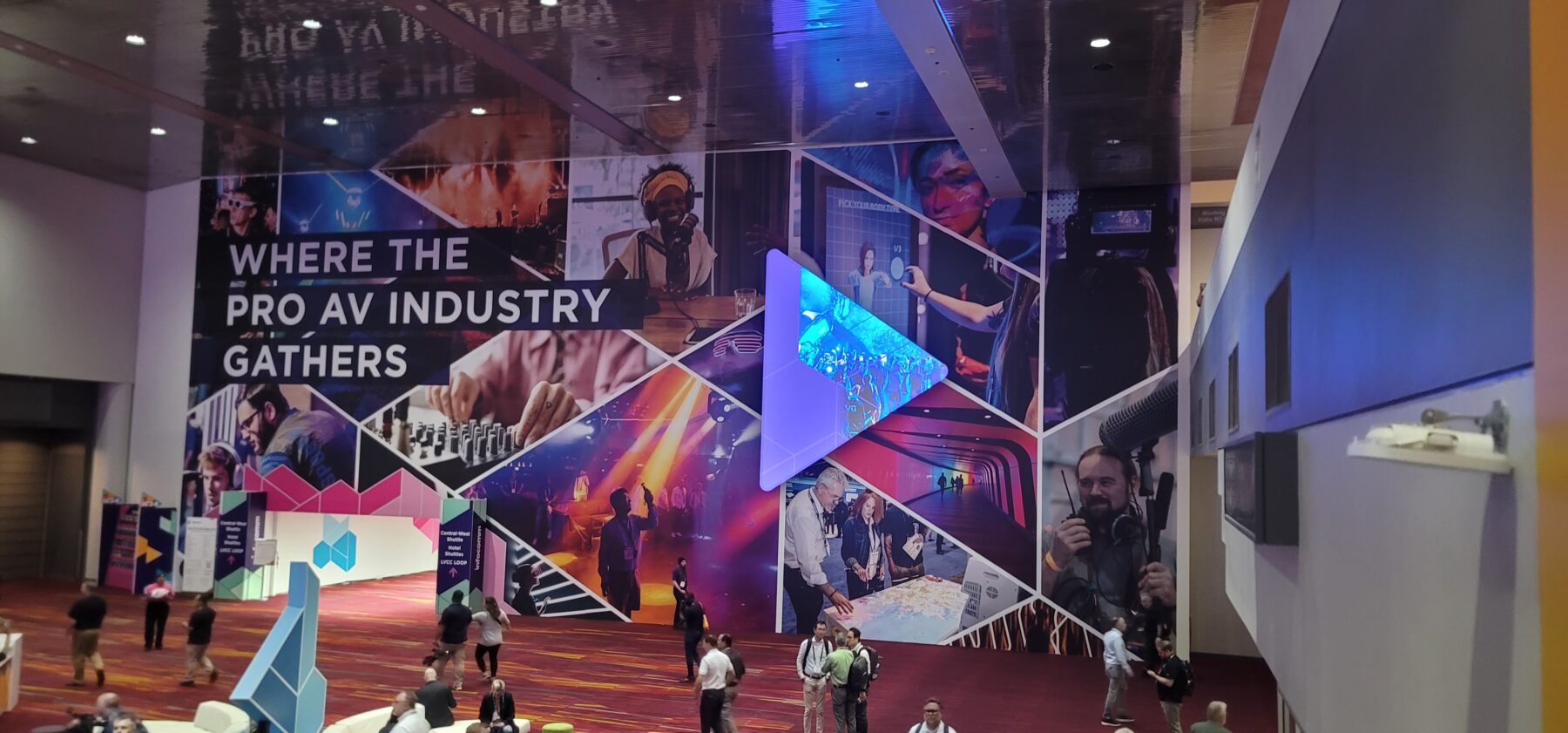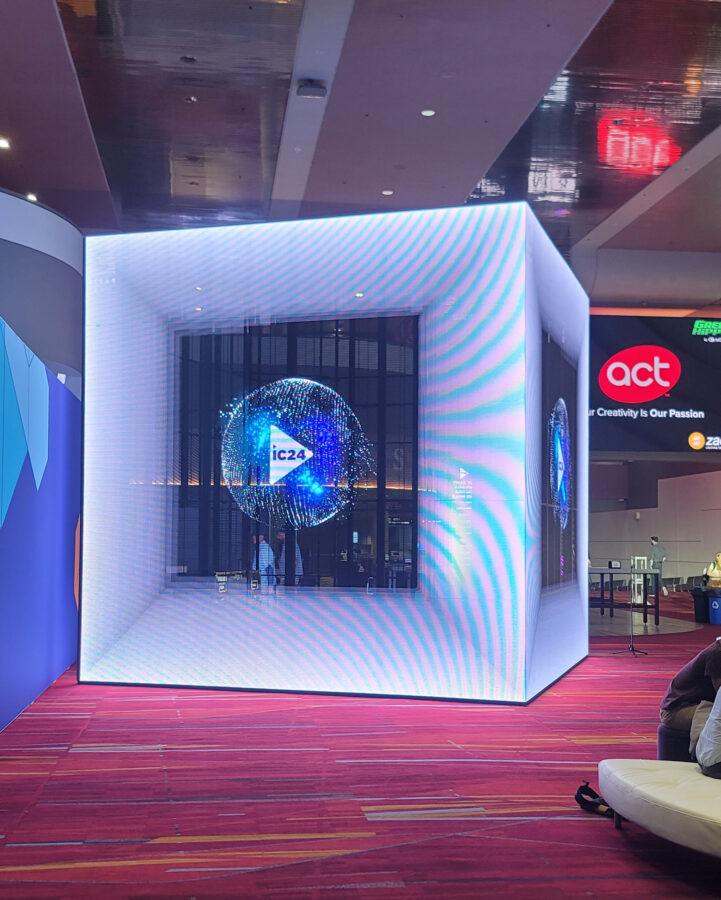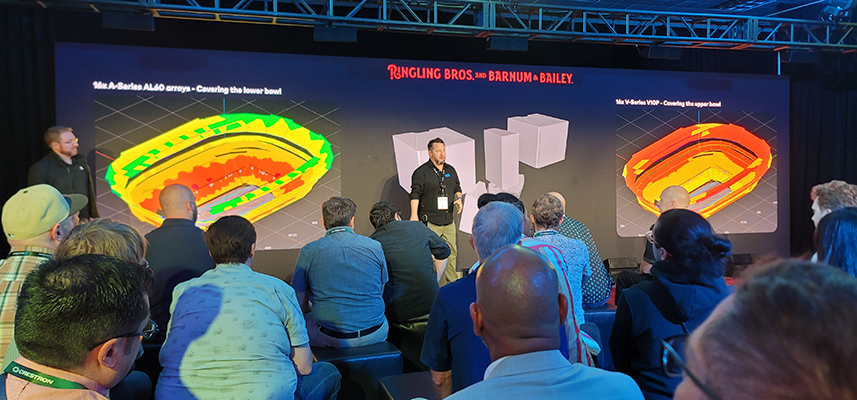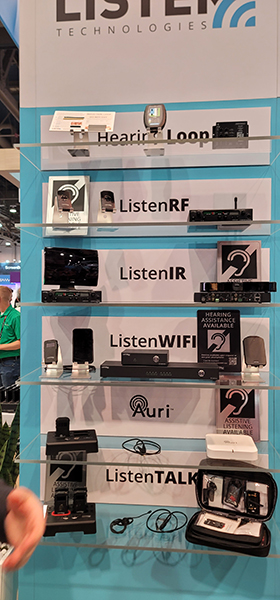Joe Barra
Consultant

InfoComm is the largest professional audiovisual trade show in North America, and a must-attend for those in the profession. InfoComm 2024 brought a lineup of exciting advancements, showcasing the year’s evolution within the AV industry. Every year, Acentech sends several members of our Technology Group to InfoComm’s educational seminars and tradeshow, where we learn about the latest and greatest in AV, security, and enterprise IT systems technology. With InfoComm 2025 just around the corner, we’re revisiting last year’s experience and its impact on our design work.
Many manufacturers are continuing their commitment to adopting more sustainable practices.
Another continuing trend is the industries leveraging of AI solutions.
There was an overwhelming number of direct-view LED display manufacturers entering the market. That said, many are from overseas with little US support or they OEM panels from bigger manufacturers. It is important to choose partners carefully in this space, as LED walls typically require careful coordination. Here are some of the trends we noticed.


Immersive audio was on full display at venues like Resorts World and The Sphere. But you don’t need to be one of these world-class venues to take advantage of this exciting technology. A lot of the smaller AV vendors have released immersive audio solutions, making them much more accessible for a variety project types and budgets.

I managed to sneak away from the show floor to catch the Keynote address – “Everything Has Changed; AV’s Infinite Potential in an Exponential Age” – by Joe Pham (recently retired QSC CEO), which I thought was very inspiring. The messaging was positive, and his point was that we, as an AV industry, own a lot of the interfaces between electronics and human senses in the real world, which positions us in a key role in implementing how AI is going to interact with people. Cameras, microphones, loudspeakers, displays – many of the standard devices we design into systems on a regular basis are being enhanced with AI features. To some, AI may seem scary, but now that we’ve seen how it can be used in AV technology, it’s clear there are some practical uses for it, and it won’t “take away everyone’s jobs.” Hopefully, AI integration will make our lives and the lives of our clients easier.
Further development towards implementing Bluetooth compatibility with assistive listening technology, Auracast, is something many of us have had our eyes on for a while. Auracast promises to provide all the best features of RF, IR, and loop systems over Bluetooth available on a user’s phone or other personal Bluetooth-compatible device without the need to connect to a specific WiFi network, borrow equipment from the venue, and at a lower cost. One of Acentech’s blogs dedicated to this emerging technology was recently published – check it out!

What impressed me the most was the vast improvement of latency across control and audiovisual systems. Some of the biggest gripes I’ve heard from the end users of the technology we incorporate into our designs are the lag between pressing a button and the system acknowledging the command given, and how slow auto-tracking/auto-framing can be. Companies like Sony with their BRC-AM7 with elite auto framing capabilities, or Guntermann & Drunck with their line of KVM switches provide good examples of much needed innovation within their respective industries. Both types of technologies can provide increased equity for the user experience in audiovisual-rich spaces.

The advancements in “steerable” audio completely exceeded my expectations. As a live sound engineer, I’ve worked with sound systems utilizing steering technologies that were limited to only vertical steering, or did not provide the necessary SPL that many larger concert venues require. Being able to hear the possibilities of a venue like the Sphere, as well as smaller Holoplot deployments at a vendor showcase completely blew me away. The demos went far beyond what I thought was possible. This technology is not only applicable to immersive experiences but can be extremely useful in the visually stunning but acoustically challenging spaces that we work in daily. The ability to control where sound is directed, but also to avoid reflective surfaces is immensely valuable.
Our cohort that attended ISE (Integrated Systems Europe, a similar but larger, global industry show held annually in Barcelona, Spain) saw many of these same trends, along with some updates on all the above technologies, and explored some new advancements that were unveiled.
Which AV technologies are you most excited about in 2025?